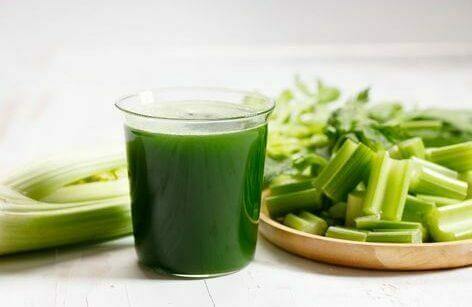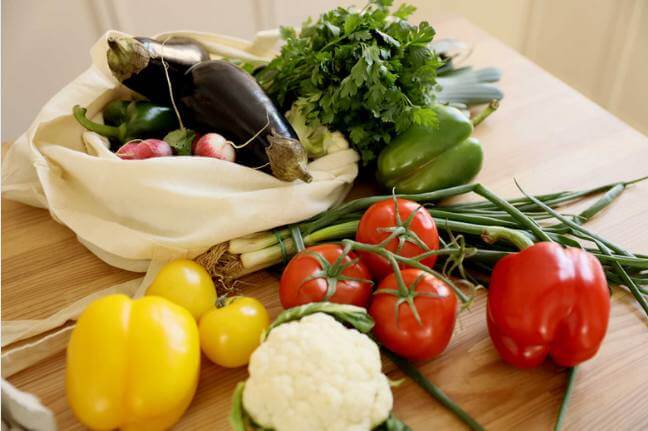Author: Randeep Singh / go to all articles on Yoga Concepts

We never thought we had be recommending an insect repellent, an extract of plant nutrition,as a kind of health tonic, but… well, see if you think we are crazy.
Some years back at Penn State University in the U.S., researchers implanted lab mice with colon-cancer cells taken from humans, and shot them up with a garlic compound (plant nutrition). In the mice receiving garlic, tumor growth was 60 percent less than in mice not given garlic.
That was the latest in a long series of experiments showing that garlic is active against cancer – though the first time, probably, that human cancer cells were targeted. Other work has shown garlic to be a cholesterol-dropper and infection fighter to boot.
But what’s that got to do with insect repellent? Simple. The Sulphur-rich compounds used in these experiments are the garlic’s natural insect repellent. What is anti-carcinogenic plant nutrition for humans can be a powerful insect repellent to boot. One little chomp, and the invader goes scurrying away. These very same powerful compounds, it turns out, are what give garlic its human health kick.
What’s really weird is that lots of plants do the same act. The bitter taste of an orange seed, for instance, keeps insects away from the growing tree. In that seed is a substance called limonin, which when applied directly to a lab animal reduces tumor growth by 60 percent, just like the garlic extract. Problem: limonin is so bitter it could pucker you senseless.
But nature is generous with her medicines and also gave plant nutrition to humans in the form of citrus fruit chemicals called limonoid glucosides, which are basically tasteless. Some years ago, a group at Baylor College of Dentistry, in Dallas, found them to be virtually as powerful as their bitter cousin at slowing down cancer in animals (55 percent tumor reduction), reported Food technology. And orange juice, no just the seed, is loaded with the stuff.
The “bite” in onions, cabbage, tomatoes, and other common vegetables and fruits ( which are considered as contributing to a healthy diet) is a sign of similar anti-bug compounds that may translate into disease swatters for people. Vegetarian diet, on a whole, has a profound effect on the body as brain from various angles.
Plant Nutrition – Fighting with Phytochemicals
Actually, there is more to these protectors than their insect repelling properties. Herbert Pierson, Ph.D., one of the leading experts in this field, says they also help plants fight off bacteria, viruses and fungi, defend against harmful ultraviolet rays (UV rays are medicine to humans though) and dehydration, while stimulating chlorophyll creation. These Plant nutrition compounds do just about everything for plants except make the Sun rise and remind you to weed.
Inside out bodies, these compounds are no less busy, says Pierson, who id vice-president of Preventive Nutrition Consultants, Inc., in Washington, and former project director of National Cancer Institute’s Cancer Preventive Designer Foods Project. They may help keep cholesterol down and arteries clear…. bolster resistance to cancer in numerous ways… grab hold of toxins and render then harmless… reduce inflammation (as for arthritis)… and generally prevent premature ageing.
Here’s a good for instance: Two specific compounds found especially in spinach and collard greens may be powerful protectors against the leading cause of irreversible blindness in older people – a condition called age related macular degeneration (AMD). A recent study found that the more people ate of these two foods, the less risk they had of developing AMD.
The most common term for these compounds , as a group, is phytochemicals – which means simple plant chemicals or plant nutrition chemicals. A more descriptive name would be phytomins (pronounced Fight – a- mins).
That suggests they are related to vitamins, which are already known to be essential to human life. It’s also an easy way to refer to an ever growing compounds with tongue twisting nameslike allyl sulphides, isothiocyanates, zeaxanthins, indoles, phenolics, phytoestrogens, flavonoids, flavones, flavonols, and the ever popular flavonones.
I had say that without these compounds in the diet, you are opening the door to cellular damage and premature onset of ageing, disease, even death – Herbert Pierson
Unlike vitamins, you wont necessarily fall over if you do not get your phytomins. If you consider dietary health to be a one rupee coin, on the one side you have vitamins, minerals, proteins and other nutrients that prevent classic deficiency symptoms. On the other side you have compounds that have pharmacological properties which are very essential.
There is alreadya long list of identified phytomins, but given their potential, they could become household words in the next few years. So here is a quick look at some of the most promising ones, including how they work and most important , how you can easily get more of them into your diet.
Flavonoids
These compounds of which of which there are approximately 4,000, have been getting a lot of attention lately because they supposedly explain why those pate-gobbling, butter-loving, wine-guzzling Frenchmen do not have as high a death rate from heart disease as might be expected.
Researchers used to it was the alcohol, but now they are saying its the flavonoids present in grape skins. When allowed to steep these skins impart their dark purple color to wine, along with their powerful
plant based nutrition.
These, in turn, keep blood cells from clotting and causing a heart attack. White wine and mixed drinks don’t have as pronounced an effect. But while the French may love their wine, they also eat lots of fruits and vegetables, and these are also full of flavonoids. Onions, green beans, apples, celery, and citrus fruit (especially the peel and pulp)have the most, as do grape juice, green and black tea.
” This is a very important class of compounds,” says Elliot Middleton, Jr., M.D., professor of medicine at the State University of New York. “There are not data yet on whether flavonoids could be as essential as diet and exercise in lowering heart disease risk, but it may be that if we consume these compounds on a regular basis, we’ll have a reduced likelihood of heart disease.”
Indeed, Dutch scientists studies 805 men for five years and found that those eating the most of five essential flavonoids were 32 percent less likely to die of heart disease. Their daily diets included four cups of tea, an apple (with skin) and about a quarter cup of onions. Likewise, in seven countries around the world where the plant nutrition (flavonoid) intake was high, the national rates of death from heart disease were correspondingly low.
Although preliminary studies with humans are mixed, these flavonoids might have cancer fighting qualities as well. For instance, tea drinkers in China have lower rates of throat cancer.
I do think the anti-cancer effects of flavonoids exist, but possibly only in synergy with a lot of other compounds in the same fruits or vegetables. – Michael Wargovich
Carotenoids
Th elong standing chief of this group of Phytomins is beta-carotene. Its the most abundant carotenoid in the foods we eat and the one most efficiently converted to vitamin A. Plus, it’s a powerful antioxidant, which means it counters cell damage that could lead to widespread cancer and heart disease.
But there are more than 600 other carotenoids, and research is proving that some of them have similar disease-fighting properties. For example, scientists recently found that people in northern Italy who ate seven or more servings of raw tomatoes every week had 60 percent less chance of developing colon, rectal, and stomach cancer tan those who ate two servings or less. In fact, eating tomatoes may lower your risk of cancer even more than eating fruits or green vegetables.
Tomatoes are one of the few foods rich in a carotenoid called lycopene a plant nutrition. And since it survives heating and processing, it is still present in tomato paste, sauce, juice, even ketchup and pizza. Other sources include water melon, pink and red grapefruit, guava, and sweet red peppers.
Other carotenoids meriting study are canthaxanthin and lutein. The former is found in certain mushrooms and used as a food coloring in cheese. When it was fed to lab rats, they developed 65 percent fewer cancers.
The later is found with beta-carotene in vegetables such as spinach. Besides possibly protecting against cataracts, it, too, is being investigating for potential cancer fighting properties.
Plant Nutrition – Genistein, Daidzein, and Saponins
No, this isn’t some slick law firm from outer space. But come to think of it, this trio can forcefully represent you in the battle against high cholesterol, and prostate and colon cancer. All three of these phytomins are present in soya beans.
Clare Hasler, director of the Functional Foods for Health Program at the University of Illinois, a unique program exclusively focusing on the study of phytochemicals and their role in preventing disease., explains: “Genistein is structurally very similar to estradiol, one of the estrogens we normally produce.
Now, we know that estrogen can promote tumor growth, but genistein, because it is so similar, binds up the receptor cells in tissues and blocks out the estradiol.
At the same time genistein , plant based nutrition, inhibits growth of new blood vessels, which tumors need in order to grow. And that’s the theory, anyway, as to why women who consume lots of soya products, as in Japan, have a much lower rate of breast cancer than, say, American women.
Meanwhile, more than 40 clinical studies have shown that saponins can lower blood cholesterol. They do it, says Pierson, by blocking sites in the intestine that take up cholesterol.
Some relatively painless ways to get soya products into your diet: Mix tofu into salads or toss some chinks of it into your greens. Dice it up and add it to soups. Stir-fry-it, Add it to your favorite noodles recipe or hide some inside your kababs. But be sure to get this plant nutrition product into your diet somehow.
You will never remember the names of all these nutrients, and fortunately, you don’t have to. Here is our list of the foods that are either extremely high in one or rich in a number of different groups.
Plant Nutrition – How to Eat them
- Soyabean – You already know how.
- Garlic – always crush or slice cloves finely to release phytochemicals.
- Onions – eat white, red, yellow for a variety of flavonoids.
- Tomatoes – even in ketchup.
- Citrus fruit – Flavonoids cluster in the peel and white, pulpy part.
- Cabbage – wins every plant nutrition contest.
- Cantaloupe or watermelons.
- Beans – kidney, pinto etc.
- Tea – green or black (use tea bags instead of loose leaves, and steep 5 to 10 minutes).
Major contenders: Virtually all greens, such as spinach, carrots, apples (leave the skin on), grapes, grape juice and red wine, cauliflower, sweet potatoes, and celery.
Do follow the tips on eating healthy while consuming your phytomins. An easy way of getting a lefty dose of this plant nutrition product is to make a simple stew crammed full of nutrient rich vegetables. Beats spending the day gnawing up cauliflower florets.
Read other Informative Articles….
Karonda – Carissa Carandas Shrub at Yoga Centre

